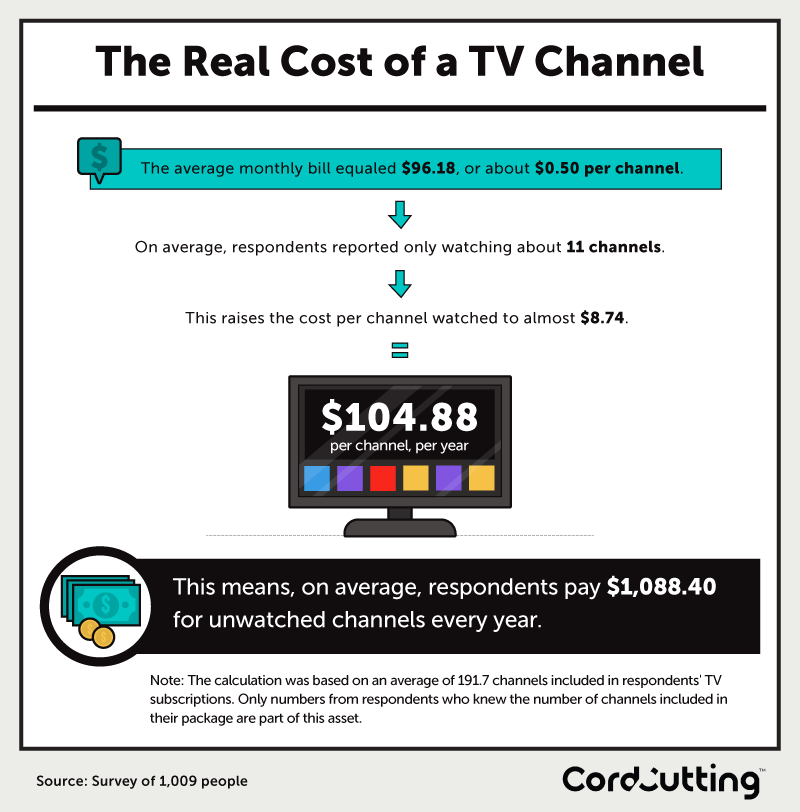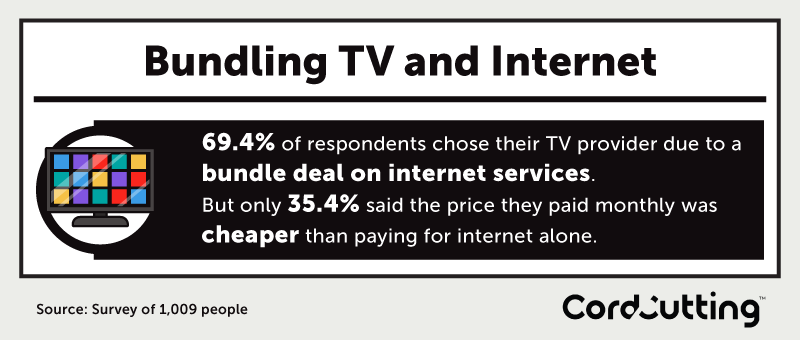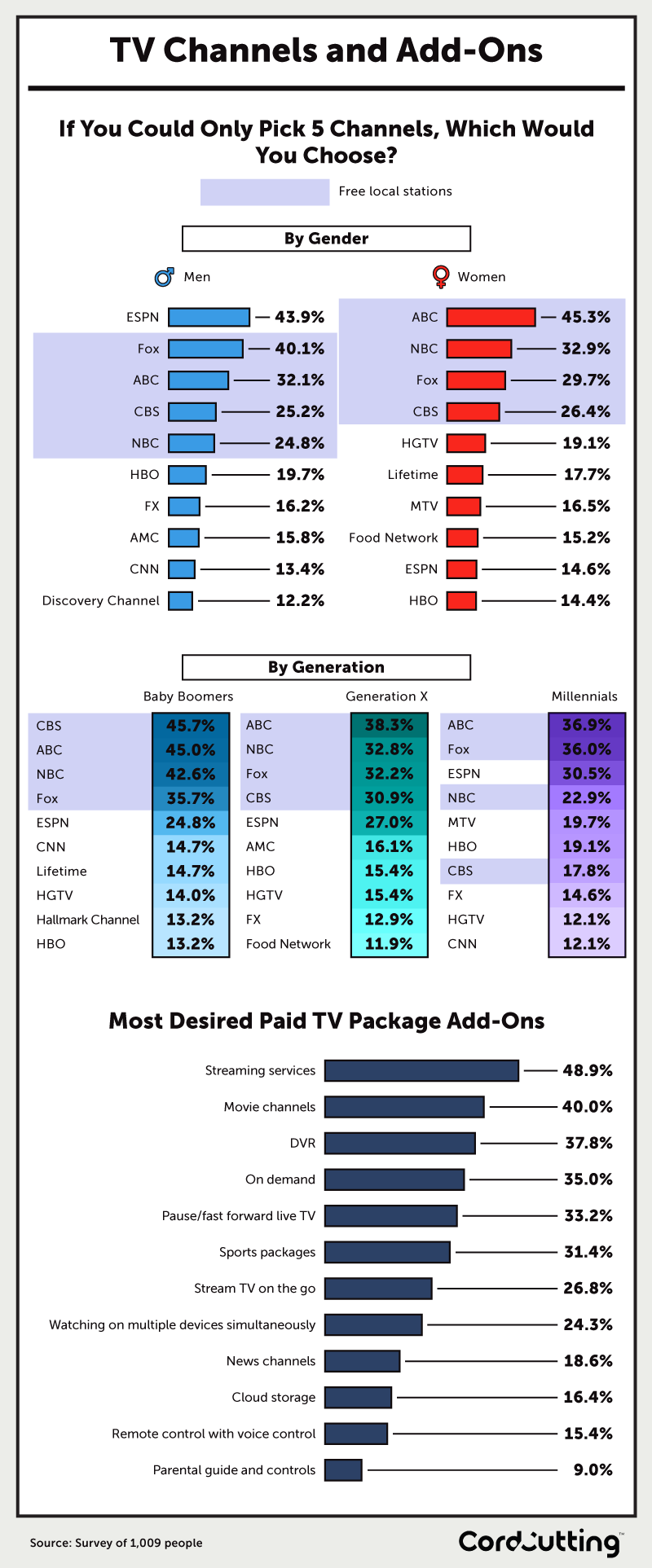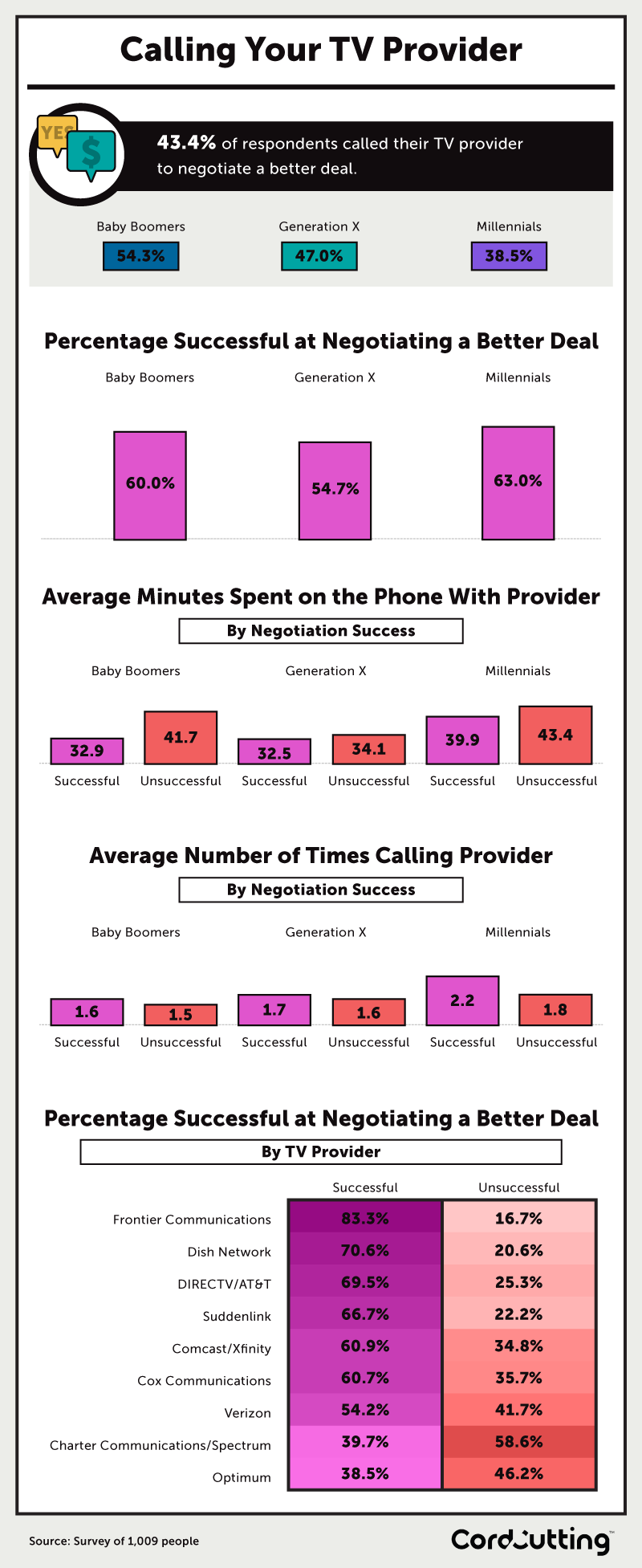Between work and sleep, it's not uncommon for Americans to say there aren't enough hours in the day. However, the average American is using much of his or her spare time to watch TV – in fact, the average U.S. household watched TV for seven hours and 50 minutes a day in 2017, according to Nielsen numbers. It's safe to conclude that watching TV is an important part of American life. TV, no doubt, is a frequent source of joy, entertainment, and even relaxation. But it's also a source of incredible waste.
In the age of streaming services and larger-than-life cable packages, one has to wonder: How many channels are Americans paying for –and how many do they actually watch? We surveyed 1,009 Americans who pay the household TV bill about what they watch, what they're spending, and whether they think their TV package is worth the hefty price tag.
Digital Wasteland?
Americans seem only to watch a small portion of the channels included in their TV subscriptions. Millennial survey respondents reported watching just 11 channels, and other generations reported watching about the same amount of channels (Gen Xers watched 11 channels, while baby boomers watched 12). In fact, respondents, on average, watched less than 6 percent of the channels in their TV package – and nearly 82 percent said they believed they waste money on their TV bill.
Costly Channels
Americans have more choices on TV than ever before, and yet, they only seem to watch a small portion. The average American had access to 189 TV channels in 2014, according to a Nielsen report. Now, our numbers suggest about the same number of options – nearly 192 channels for the average survey respondent.
Cable packages are no light expense for many Americans, more than half of which have less than $1,000 in their savings account. According to our survey data, respondents paid an average of $96.18 per month for their cable bill. That means, given the small number of channels they watch, the average respondent wastes $1,088 on unused channels per year.
Bundled Abundance
Our results suggest that roughly 69 percent of respondents chose their specific TV provider because of a bundled deal on internet and cable. Yet, only around 35 percent of respondents said their monthly bill for the TV and cable bundle was cheaper than the cost of the internet alone. In a time when many of Americans' favorite channels are available through a streaming subscription, it's possible some consumers are better off foregoing cable and paying to tune in online. After all, an estimated 6 in 10 young adults already use online streaming as their primary method for watching TV.
Pay-per-View
Despite all the time Americans spend watching TV and the many channels available to them, only a few brand names can reign. We asked men and women of various ages to name their favorite channels. Among men, ESPN, Fox, ABC, CBS, and NBC made the top five –and four of those channels are networks consumers can watch for free. Meanwhile, the top five channels for women were ABC, NBC, Fox, CBS, and HGTV. Only HGTV is a cable channel.
The free networks such as ABC, Fox, and CBS ranked high among all age demographics. Millennials varied from other generations surveyed in that nearly 20 percent watched MTV. Our data suggest an interesting point: Not only are TV viewers of various ages and genders tuning in to just a very small portion of their channels, but also many of the top-watched channels are free.
Deal or No Deal?
When it comes to getting bang for their buck, the average American TV subscriber doesn't seem too happy with what they're getting. An estimated 70 percent of those who pay for TV believe they're paying too much, and we've already established that the average viewer is only watching a small portion of their paid channels. However, our survey results suggest that less than half of participants tried calling their TV provider to negotiate a better deal.
Interestingly, millennials were the least likely to attempt negotiating a better price but had the most success in doing so (less than 39 percent called, but 63 percent of those who did were able to receive a better deal). Baby boomers were the most likely to call and had a similar success rate of around 60 percent. Nevertheless, calling can be quite laborious – respondents typically spent at least 30 minutes on the phone with their provider. Frontier Communications, Dish Network, and DIRECTV/AT&T were the most receptive to negotiating a better deal. Respondents with Optimum and Charter Communications/Spectrum had the lowest success rates for negotiating.
Negotiation Tactics
Closing a deal isn't always easy – but successful deal-makers certainly have their tips. We asked those who negotiated a TV package or deal to share their suggestions for getting a better price.
The biggest tip is sort of obvious: being straightforward enough to mention you'd like to lower your bill. About 62 percent of respondents suggested this, while more than half recommended staying calm and keeping a friendly tone. Another 46 percent of respondents said that mentioning you want to cancel your service as effective for negotiating, while others suggested mentioning a great offer from a competitor. Female respondents were more likely to suggest staying calm, friendly, and courteous as key negotiating tips.
Our results also suggest that negotiating certainly pays off.Many respondents were able to negotiate monthly discounts of $20 or more. Some of the most effective negotiation tactics, in terms of the most deducted prices, were not settling for the first couple of offers, being confident, mentioning an offer from a competitor, or mentioning the wish to downgrade a package.
Conclusion
Television viewership is having a pivotal moment in the U.S. About 24.9 million people canceled their paid TV subscriptions in 2017, cutting the cord on an American tradition during a broader transition to smartphones, streaming platforms, and other services. Our survey of 1,009 Americans paying a household TV bill suggests that almost all participants – some 96 percent –would like an alternative to the oversized cable TV package. Our exploration of wasted money, negotiations, and TV viewership unveils a harsh reality for TV providers: More options aren't always the preferred option, and many are seeking to renegotiate their cable TV price or opt out entirely.
Methodology
For this project, we surveyed 1,009 Americans of all ages who reported paying for their household's TV bill. 517 of the respondents identified as women, and 491 identified as men. One respondent identified as gender nonbinary but had to be excluded from the results due to a small sample size. Fifty-five percent of respondents were millennials, 31.8 percent belonged to Generation X, and 13 percent were baby boomers. The respondents ranged in age from 18 to 81 with an average age of 38.7 and a standard deviation of 11.7.
Fair Use Statement
Are you upset about your cable bill? Do you feel like you're paying too much? If you want to educate your friends and family about our findings, the graphics and information found on this website are available for noncommercial reuse. Feel free to share them as much as you'd like across the web and on social media, but please make sure to link back to this page. Thank you!






